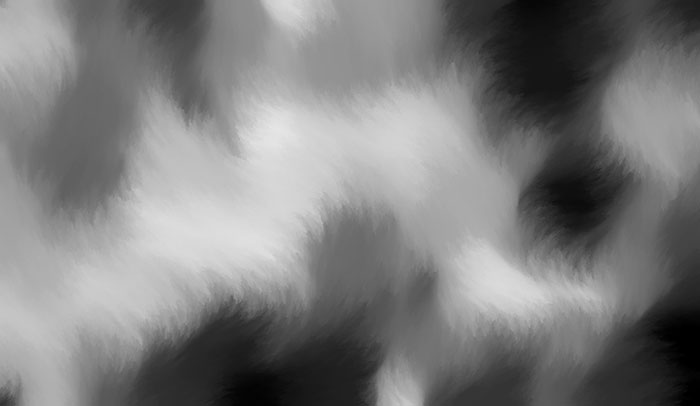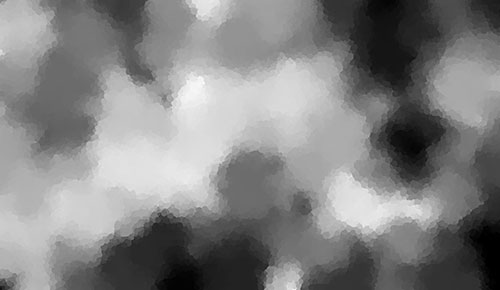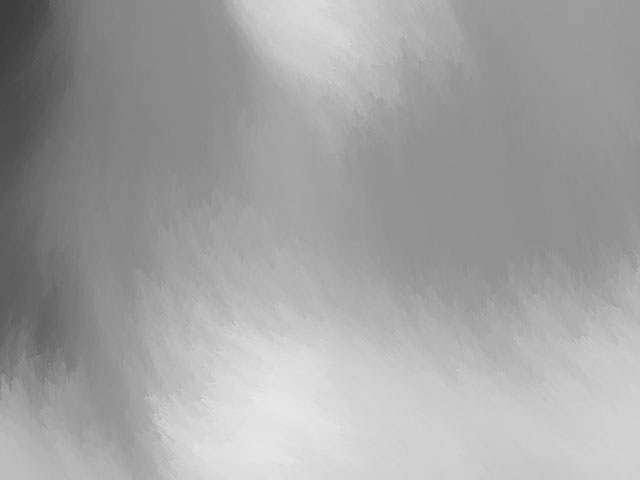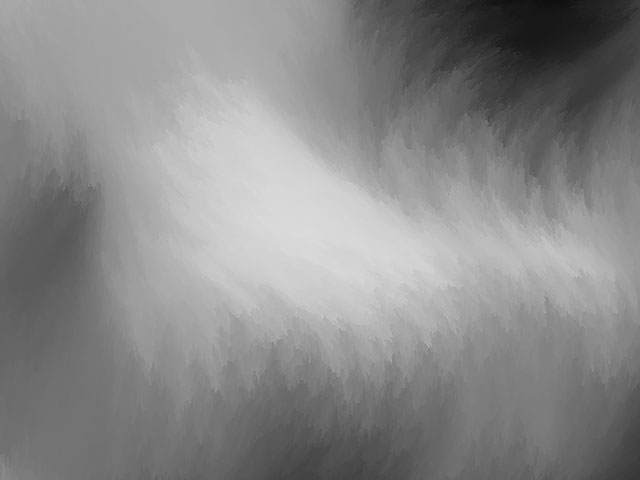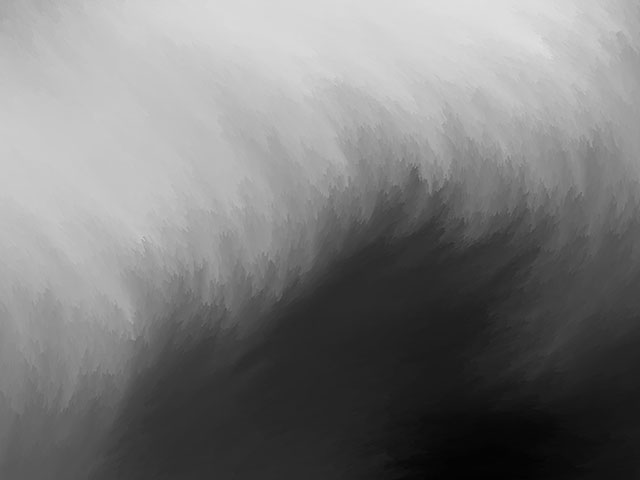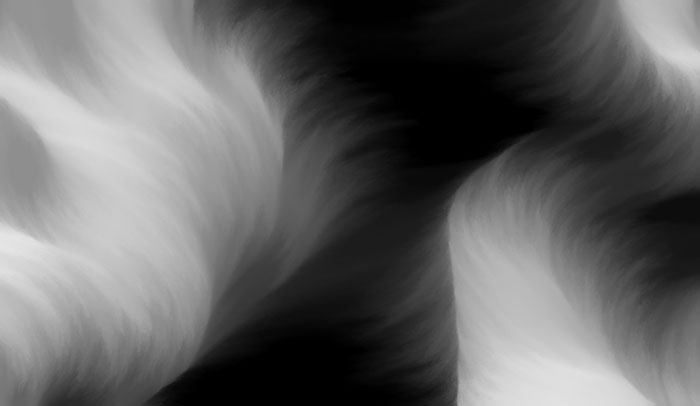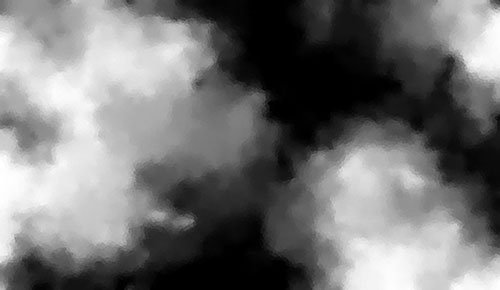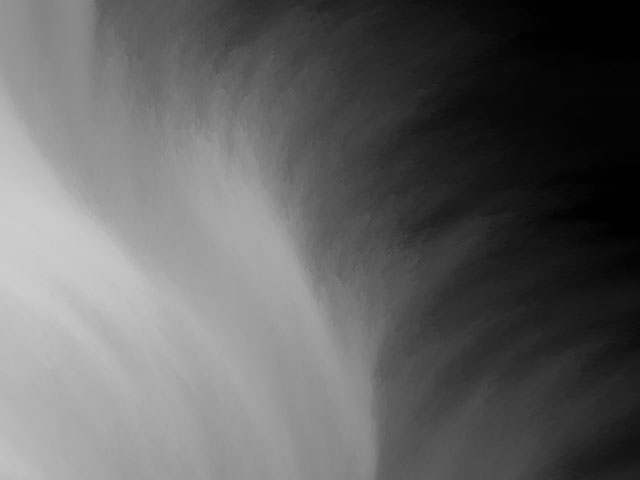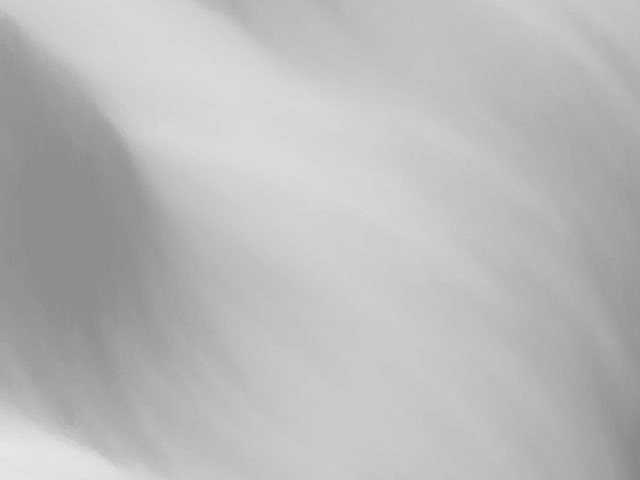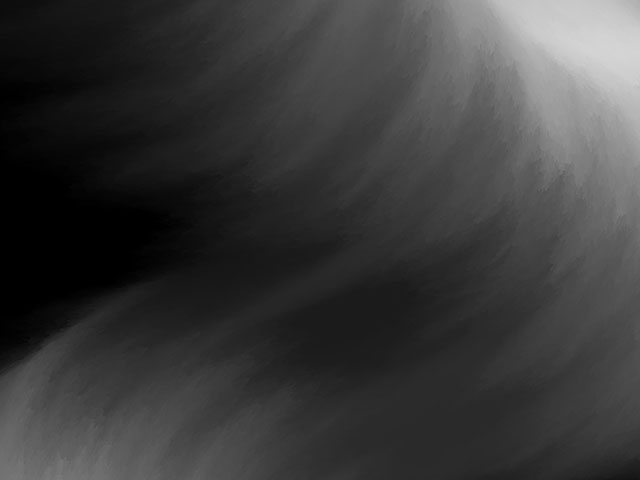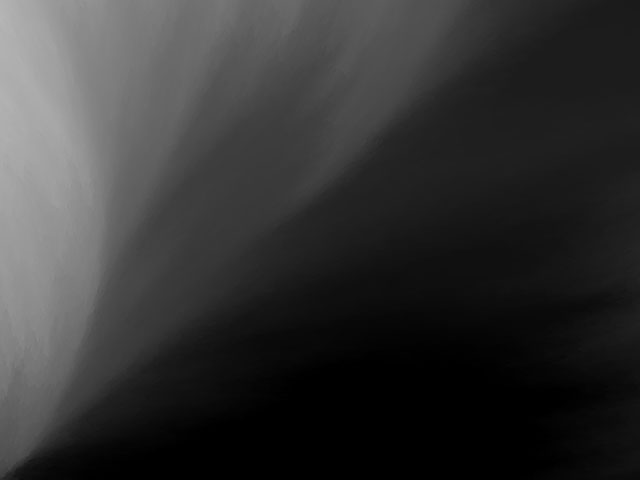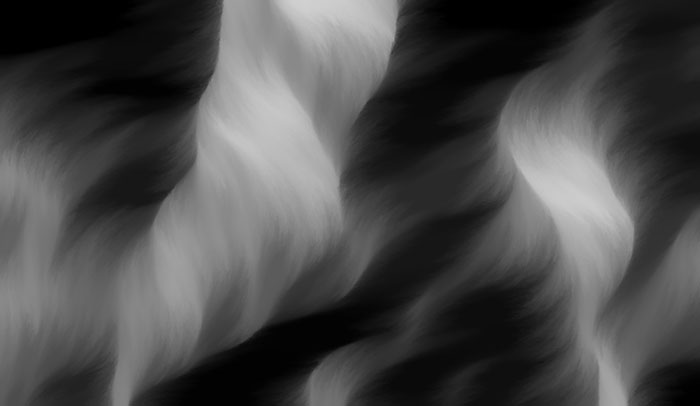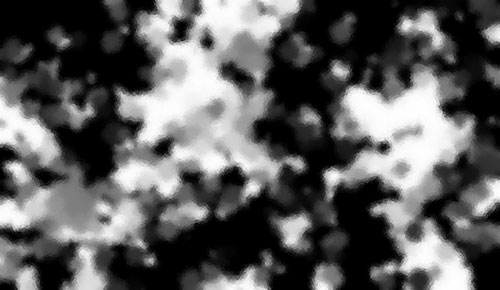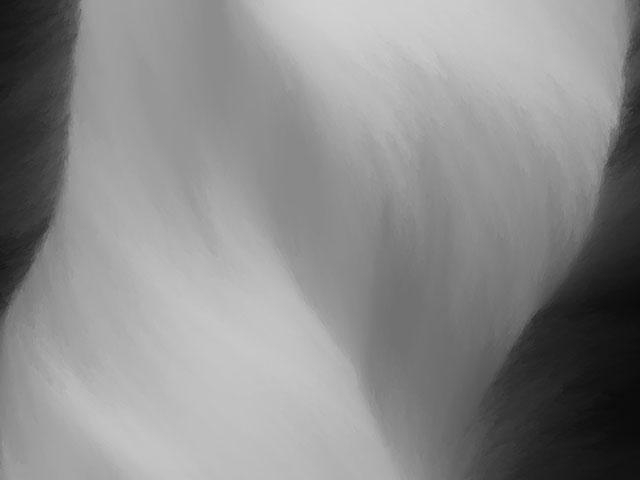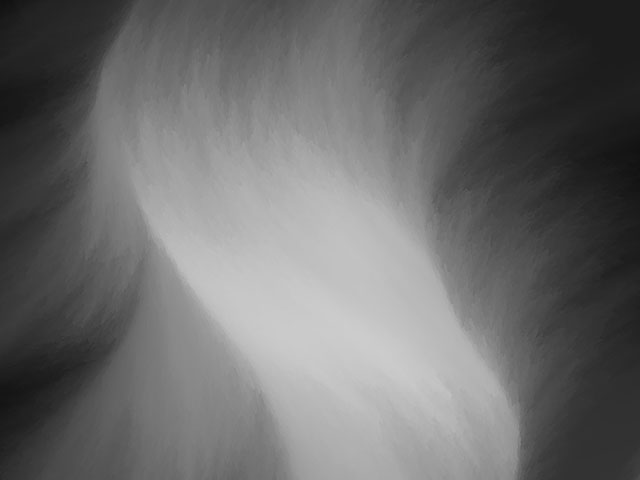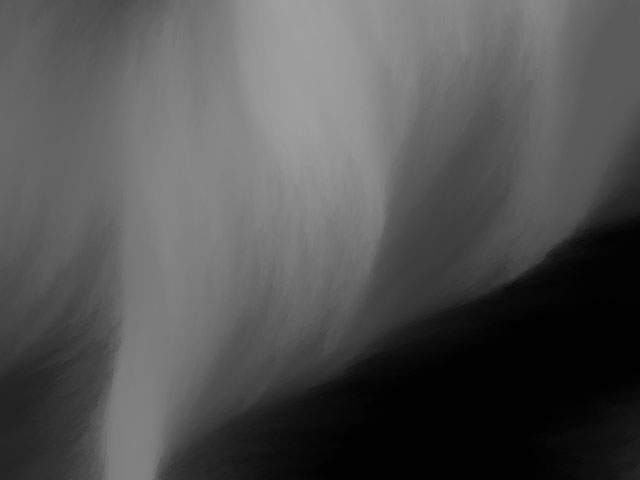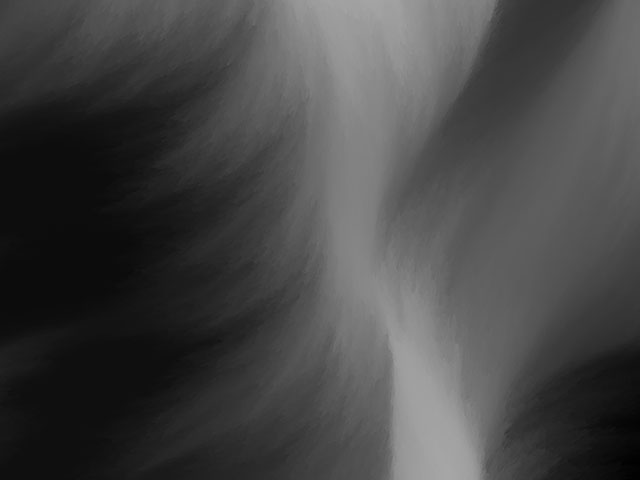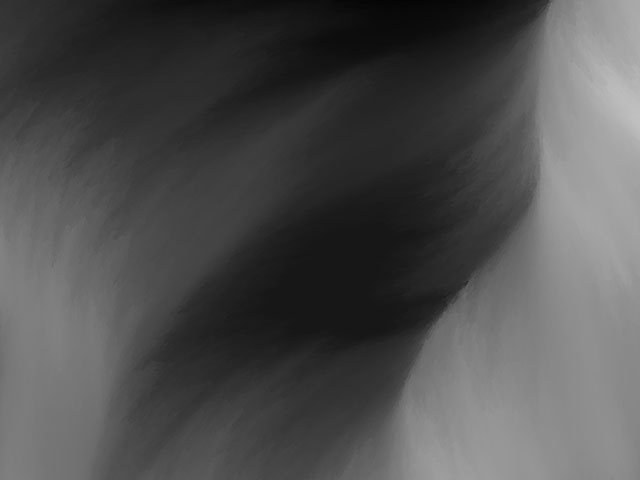6200 pixels (w) x 3600 pixels (h), computer ‘painting’ using my own ‘kinetic’ abstract computer program.
Date produced: 6th June 2025
This image, one of my very favourite abstracts developed using my computer abstracts program, feels a bit like an X-Ray image, but also shows excellent twisting of cloudlike forms. It is the result of a lot of different processes, and quite a few ideas where I thought, what might result if I tried process “X”? Okay, now can I get something good happening if I apply process “Y”?
The image initially developed around a distribution of white, grey and black rectangles. It was then modified by applying large numbers of circles that each use an average colouring over their 4 corners (as if they were squares instead of circles). This resulted in an image of ‘shapes’ of tone (a smaller version is shown just below this writing). I copied that image to my swap buffer and used it as the basis for the next lot of processing. I then applied many processes that work over the whole image, where the directions of thin rectangles were determined by the tonal values of the respective position of the image in the swap buffer, under the specific settings that I applied. As the image developed, I would copy it to the swap buffer and then apply finer and finer applications of the same type of processing. This is the result.
One of the later additions made to my abstracts development programs was to keep a tally of the number of elements applied in creating a particular image. That tally is only shown as I create each image, rather than being saved with each image for future reference, but I saw that this particular image used almost 12,000,000 elements! I noticed that I used about 300,000 elements just in coming up with the image of ‘shapes’ of tone, so the remaining 11,700,000 elements were added to create the twisting and ‘smoothing’. |
